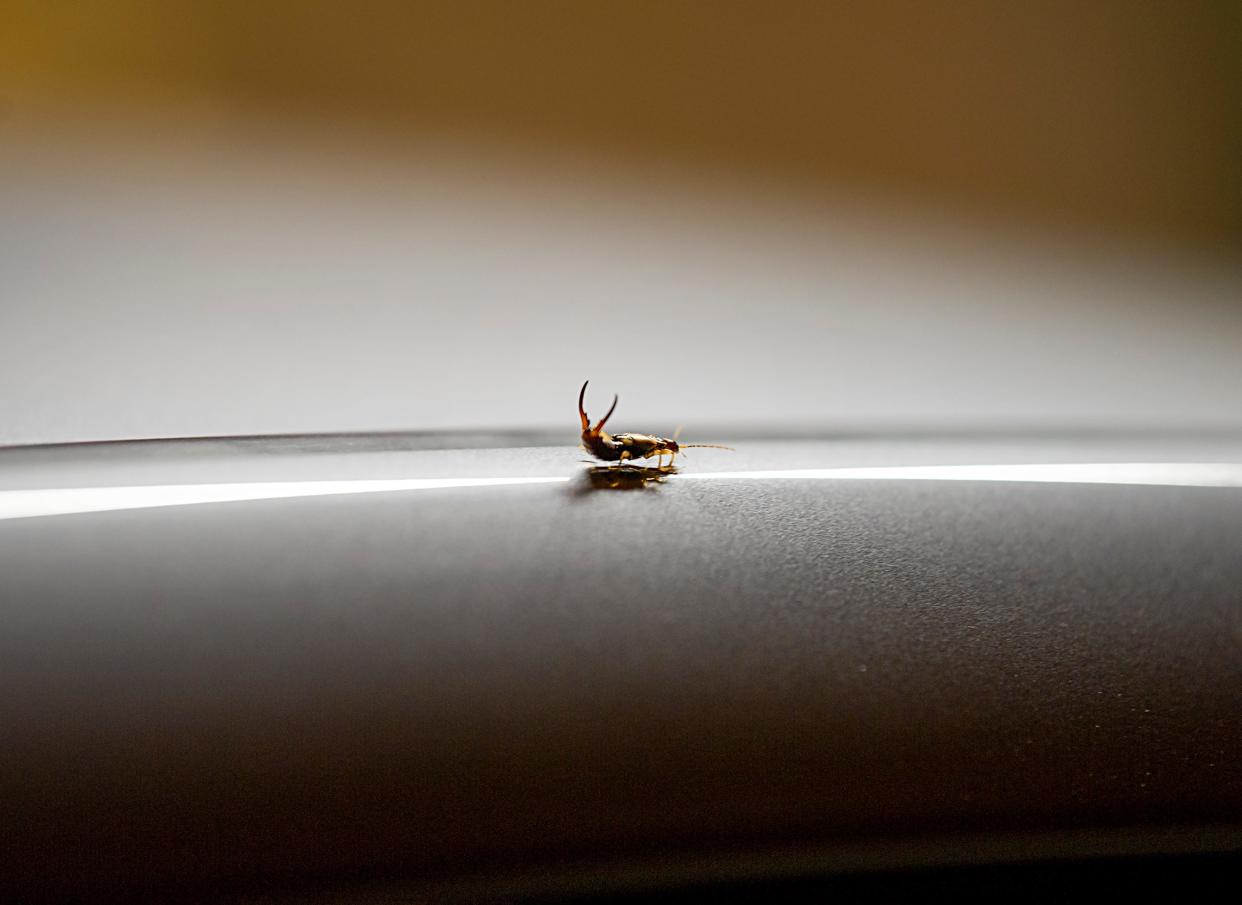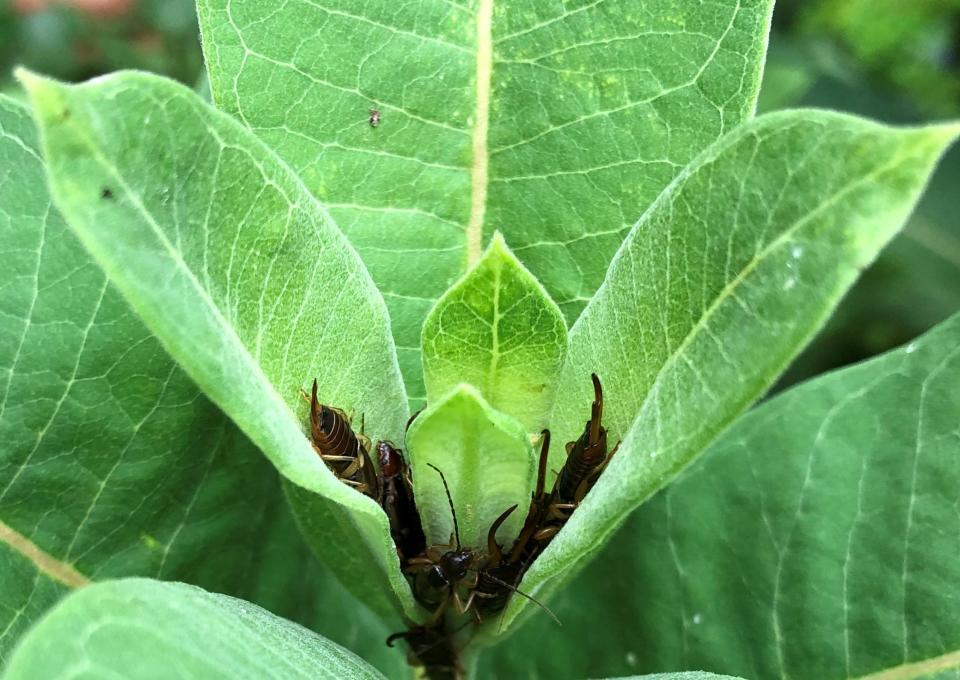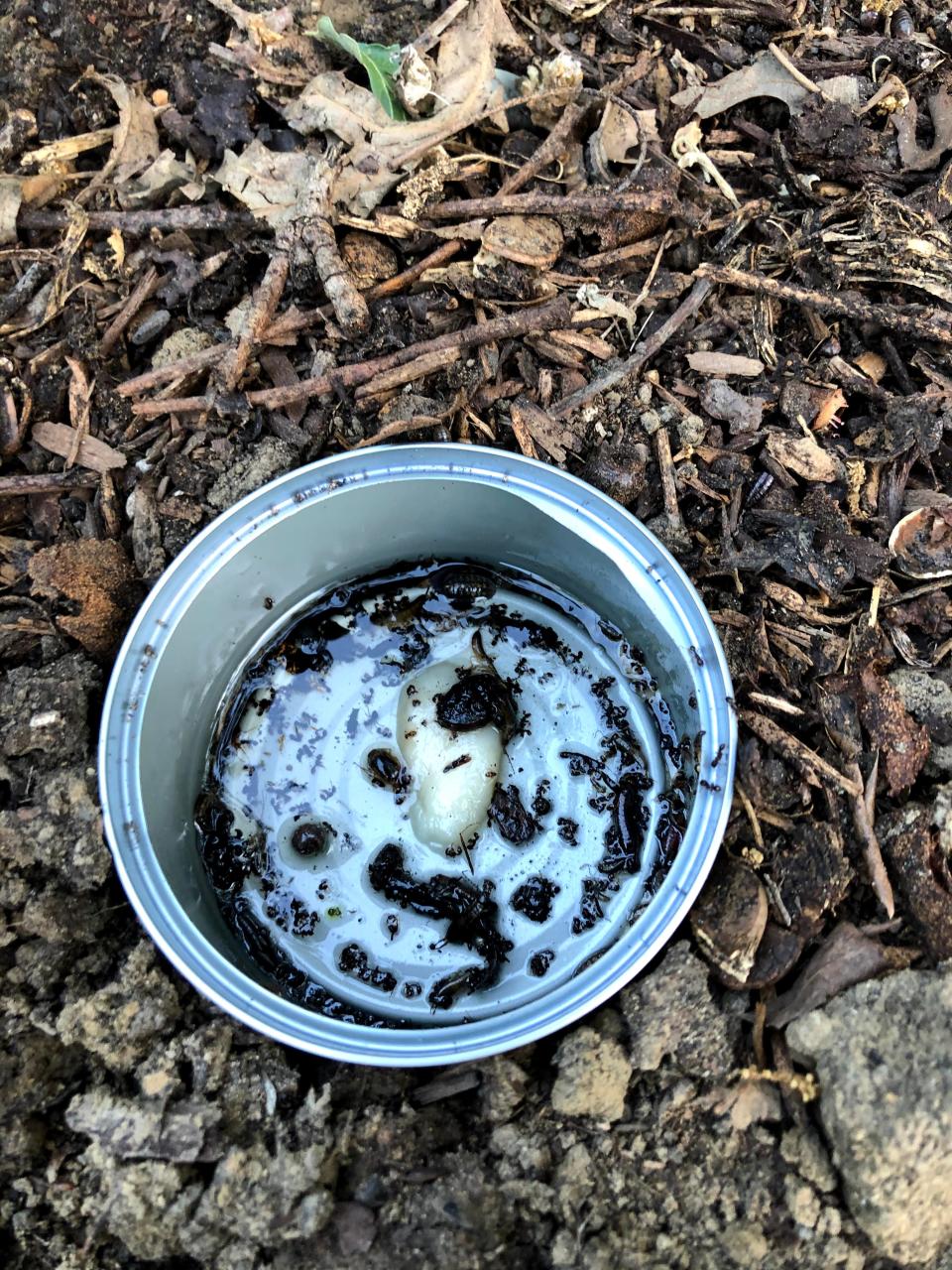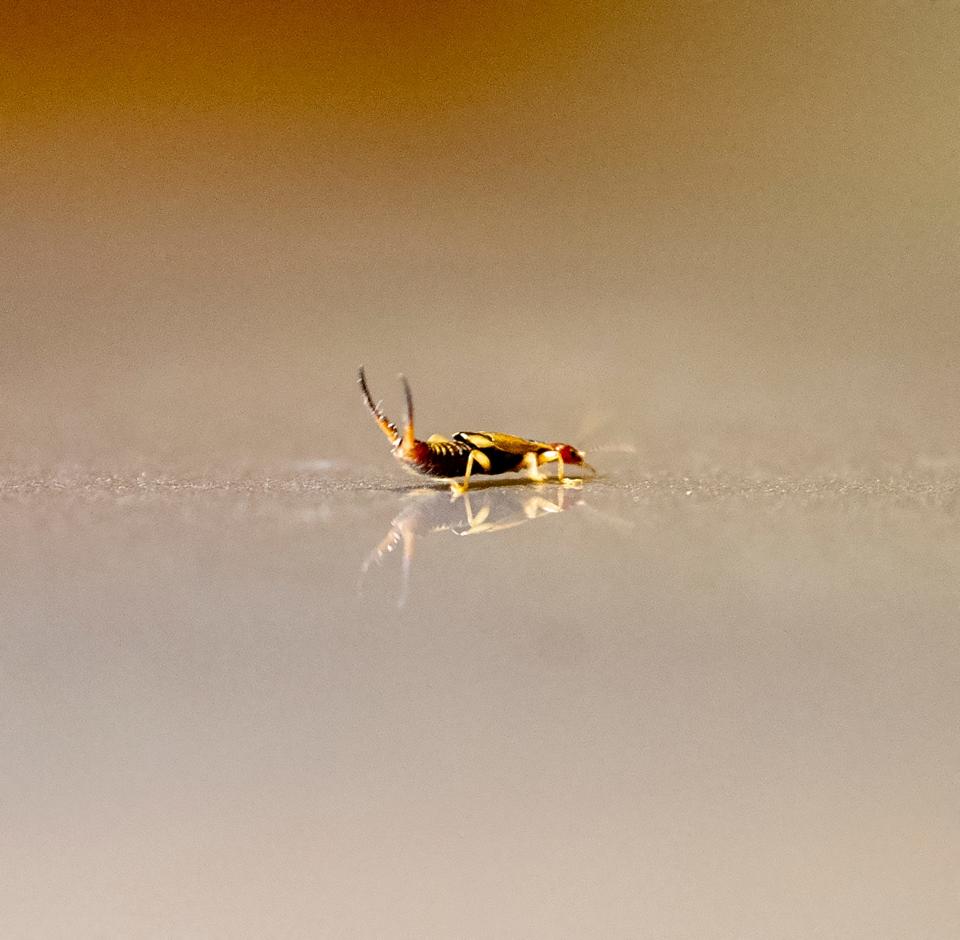Got an earwig problem? Here's what to know about the bugs and how to get rid of them

With springtime rains upon us in Oklahoma, your backyard might be becoming the perfect environment for the dreaded earwig.
Here's what to know if you've seen these bugs in your yard, or if they've already made it inside your home.
What are earwigs?
Earwigs are a type of insect, measuring about as long as a paperclip, with a set of distinct pinchers on the end of their abdomen.
While there are more than 1200 species of earwig worldwide, there are only 4 species of earwigs established in Oklahoma, according to the Oklahoma State University Department of Entomology and Plant Pathology.
Where do earwigs live?

Earwigs love to call damp, dark and warm places home, like inside mulch or compost, or under pieces of rock or wood in your garden, according to Oklahoma pest control company Emtec.
How to get rid of earwigs

One sign of an earwig infestation are tiny, irregular holes in the leaves of your plants, Emtec said. They also leave tiny, black droppings that look like grains of pepper.
Once you've identified you have an earwig problem, there are a few ways to help before calling a pest control company:
Make your garden and backyard less inviting for them by removing hiding spots like debris, piles of wood or leaves.
Use diatomaceous earth or copper tape to protect your plants.
Create your own earwig traps using old tuna cans and fish or vegetable oil. Kill the trapped insects by dumping them in a bucket of soapy water.
Consider using insecticides or bait designed for earwigs.
Keep natural earwig predators like birds, toads, and other insect-eating animals in your garden with bird feeders, water sources, birdhouses or toad houses.
Are earwigs harmful to humans?
While earwigs may use their pinchers if they feel threatened, the pinch is not harmful or venomous. Their appearance gives off the misconception that they are dangerous, but they are not, pest control company Orkin said.
Why are they called earwigs?

The name earwig is derived from the Anglo-Saxon word for "ear creature," thanks to the superstition that the insects crawl into people's ears while asleep, according to Britannica.
Orkin confirms the idea that earwigs crawl into people's ears and lay eggs in their brain is just a myth.
This article originally appeared on Oklahoman: Here's what to do if you have an earwig infestation

